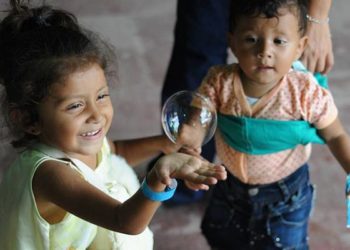Pediatric gunshot injuries associated with higher mortality and costs
Image: CC/Wiki
1. The relative incidence of gunshot injuries seen by multiple EMS was low; however, they were associated with a disproportionate amount of adverse outcomes, required major therapeutic interventions and resulted in higher mortality and per-patient costs when compared to other injury mechanisms.
2. Older adolescent males were most at-risk for gunshot-related injuries and consequences.
Evidence Rating Level: 2 (Good)
Study Rundown: Gunshot injures are a leading cause of death among children and adolescents in the United States, ranking second only to motor vehicle accidents as a cause of death for those ages 15 to 19 years. Previous research lacks population-based approaches to gunshot-related injuries in children, particularly the role of emergency medical services (EMS). The current study addressed these gaps in the literature through the inclusion of injured children evaluated by 47 EMS agencies in five regions. Results indicated that while the relative incidence of gunshot injuries was low, when compared to other injury mechanisms gunshot wounds were associated with a disproportionate amount of adverse outcomes, requiring major therapeutic interventions and resulting in higher mortality and per-patient costs. Furthermore, older adolescent males were found to be most at risk for gunshot injuries and their associated consequences. This study was limited by unmeasured confounding and bias, such as limiting the population to western U.S. regions and only including injuries with EMS involvement. These results highlight the need for more rigorous research and targeted, interdisciplinary efforts for gunshot injury prevention, such as those implemented for child motor vehicle safety.
Click to read the study published today in Pediatrics
Relevant Reading: Outcomes in Children and Young Adults Who Are Hospitalized for Firearms-Related Injuries
Study Author, Dr. Craig D. Newgard, MD, MPH, talks to 2 Minute Medicine: Associate Professor; Director, Center for Policy and Research in Emergency Medicine, Department of Emergency Medicine, Oregon Health and Science University, Portland, OR.
“Gunshot injuries are an important cause of preventable injury and mortality in children, with emergency services often providing the initial care for patients. However, there is little recent population-based research to guide public health, injury prevention, and health policy efforts. We examined 49,983 injured children in 5 regions who had a 9-1-1 emergency services response, 505 (1%) of whom had gunshot wounds. While gunshot injuries were uncommon in children, they caused greater injury severity, need for major surgery, mortality, and costs compared with other injury mechanisms. There was also large variation in the population-adjusted incidence of pediatric gunshot injuries between regions. These findings fill important gaps in the scientific literature and help provide objective information for policy makers. Public health, injury prevention, and health policy solutions are needed to reduce gunshot injuries in children.”
In-Depth [retrospective cohort study]: A total of 49,983 injured children between the ages of 0 and 19 were seen by EMS providers over the three-year study period. Researchers assessed the incidence, injury mechanism and severity, mortality, and per-patient costs of these injuries. Mechanisms of injury fell into six general categories: gunshot, “cut or piercing (eg. stabbing),” “occupant motor vehicle accidents,” “pedestrians struck by motor vehicles,” falls, “struck by blunt object” (eg. assaults), and “other”. Of these children, 1% had gunshot injuries, 83.2% of which were between ages 15 to 19, and 84.5% were male. Compared with other injury mechanisms, children with gunshot injuries had significantly greater out-of-hospital physiologic compromise (eg. higher rates of age-adjusted hypotension), required more EMS medical procedures (eg. intubation attempts and intravenous line placements), had a higher proportion of deaths declared in the field, and had more field trauma activations. Children with gunshot injuries also had the highest proportion of injury severity scores (ISS) ≥16, indicating “serious injury”, and they underwent the greatest proportion of major surgical interventions and blood transfusions. In-hospital mortality for children with gunshot injuries (8.0%) was nearly 4 times greater than the next highest group, “cut/piercing” (2.2%). Furthermore, children with gunshot injuries incurred the highest average per-patient costs ($28,510), almost double that of the next highest group, “struck by a motor vehicle” ($15,566).
By Cordelia Y. Ross and Leah H. Carr
More from this author: Psychotropic medication use declining in children with behavioral disorders; Postnatal breastfeeding concerns associated with discontinuation; Childhood bullying associated with increased risk of psychosomatic problems; Parents’ ADHD treatment preferences predict treatment initiation; Difficulty diagnosing autism spectrum disorders in Latino children
© 2013 2minutemedicine.com. All rights reserved. No works may be reproduced without expressed written consent from 2minutemedicine.com. Disclaimer: We present factual information directly from peer reviewed medical journals. No post should be construed as medical advice and is not intended as such by the authors, editors, staff or by 2minutemedicine.com. PLEASE SEE A HEALTHCARE PROVIDER IN YOUR AREA IF YOU SEEK MEDICAL ADVICE OF ANY SORT.






